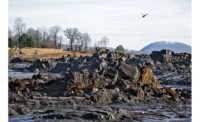Viewpoint: The American Energy Infrastructure
Make Coal Great Again—or Build New Industries?
President Trump has bet the farm on saving traditional jobs in industries that are evolving

The issue of jobs was a central theme of President Donald Trump’s election campaign.
He claimed that undocumented immigrants were taking jobs from American citizens; he blamed the North American Free Trade agreement for the loss of jobs to Mexico’s low-cost labor; he blamed China for unfair trade practices and currency manipulation that cost American jobs; and he promised to end the regulatory “war on coal” and put coal miners back to work.
There probably is at least a grain of truth in each of those claims, but since taking office, Trump has issued executive orders and pursued policies as if the claims are gospel, rather than starting points for discussion.
Trump has bet the farm on saving traditional jobs in industries that are evolving in response to their markets, and on restoring the jobs in industries that are fading as demand for their products fades.
Coal is an obvious example of the latter. Trump’s mantra of “job-killing regulations” blames the trends on an easy target that can be struck down with an executive order. Will that work? Is solving the employment problem of the middle-class worker a simple matter of deleting regulations?
A more likely path to good jobs lies in retraining workers in dying industries to acquire skills demanded by growing ones.
Early this year, a study by IHS Markit for the Commonwealth of Pennsylvania found that the abundant natural gas from the Marcellus and other shale beds would support four ethane crackers in addition to the one Shell is planning to build.
Those plants will support thousands of construction jobs and likely thousands more permanent manufacturing jobs for laid-off miners in the Appalachian Basin.
Alternative-energy generation also is experiencing robust growth.
A January 2017 Energy Dept. report found that, of 1.9 million jobs in electric power generation, mining and fuel extraction, nearly 40% are in the non-fossil side of the total.
Many industries now are committed to decarbonizing their operations regardless of government policy, so that proportion is bound to grow. Other signs are pointing in the same direction.
In Kentucky, an abandoned strip mine will become the state’s largest solar farm and the Coal Museum is installing solar panels on its roof to lower its energy costs. For coal, the handwriting is on the wall.
Wise public-policy makers will shake off the shackles of ideology, sentiment and tradition to heed the market’s signals.
When the automobile industry outcompeted horse-drawn transportation, the buggy-whip industry died out.
Even the coal industry’s leaders admit that their industry will not be great again.
Tom Armistead is the consulting editor of ENR Energy. After a 23-year career in construction, he served 12 years as ENR’s editor, first for power and industrial news and subsequently for energy news.


